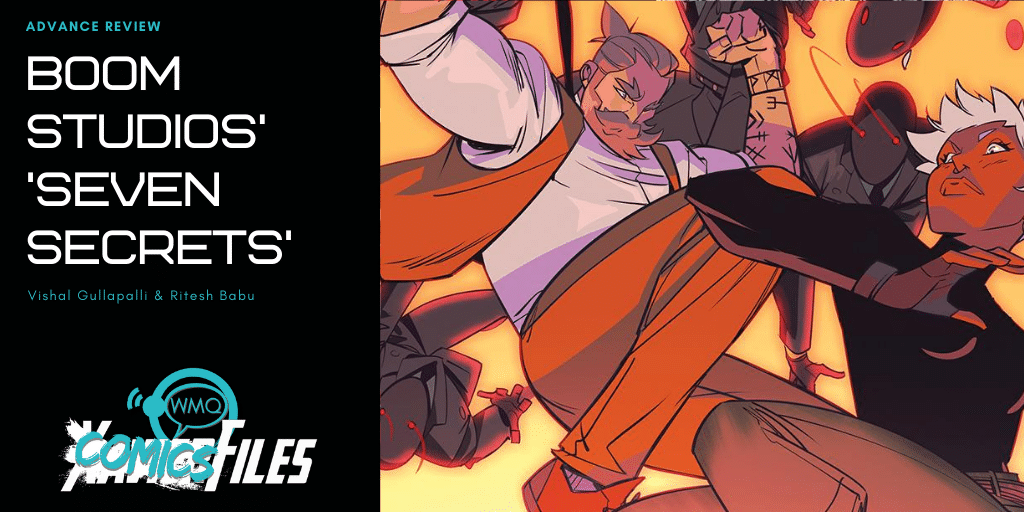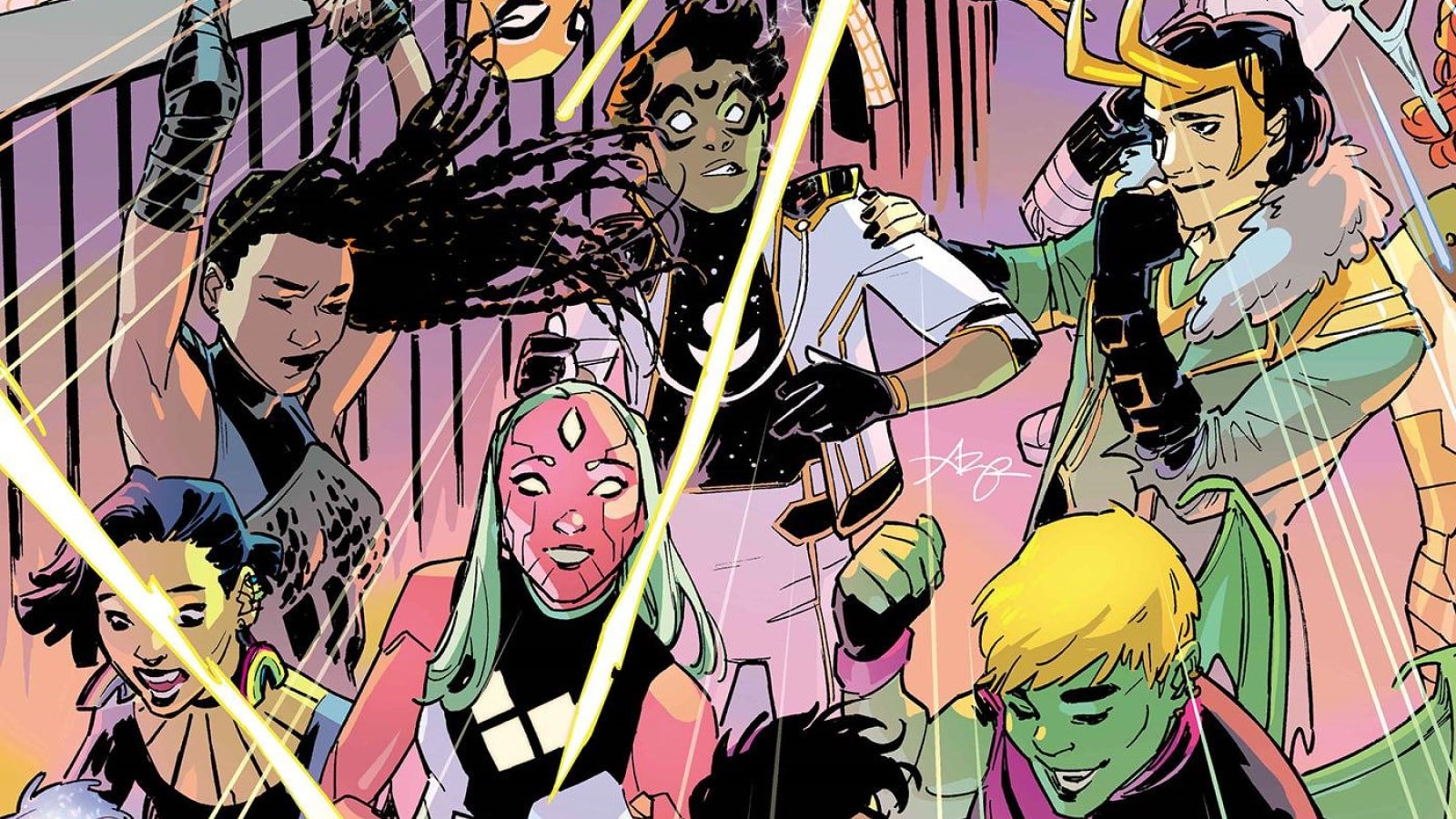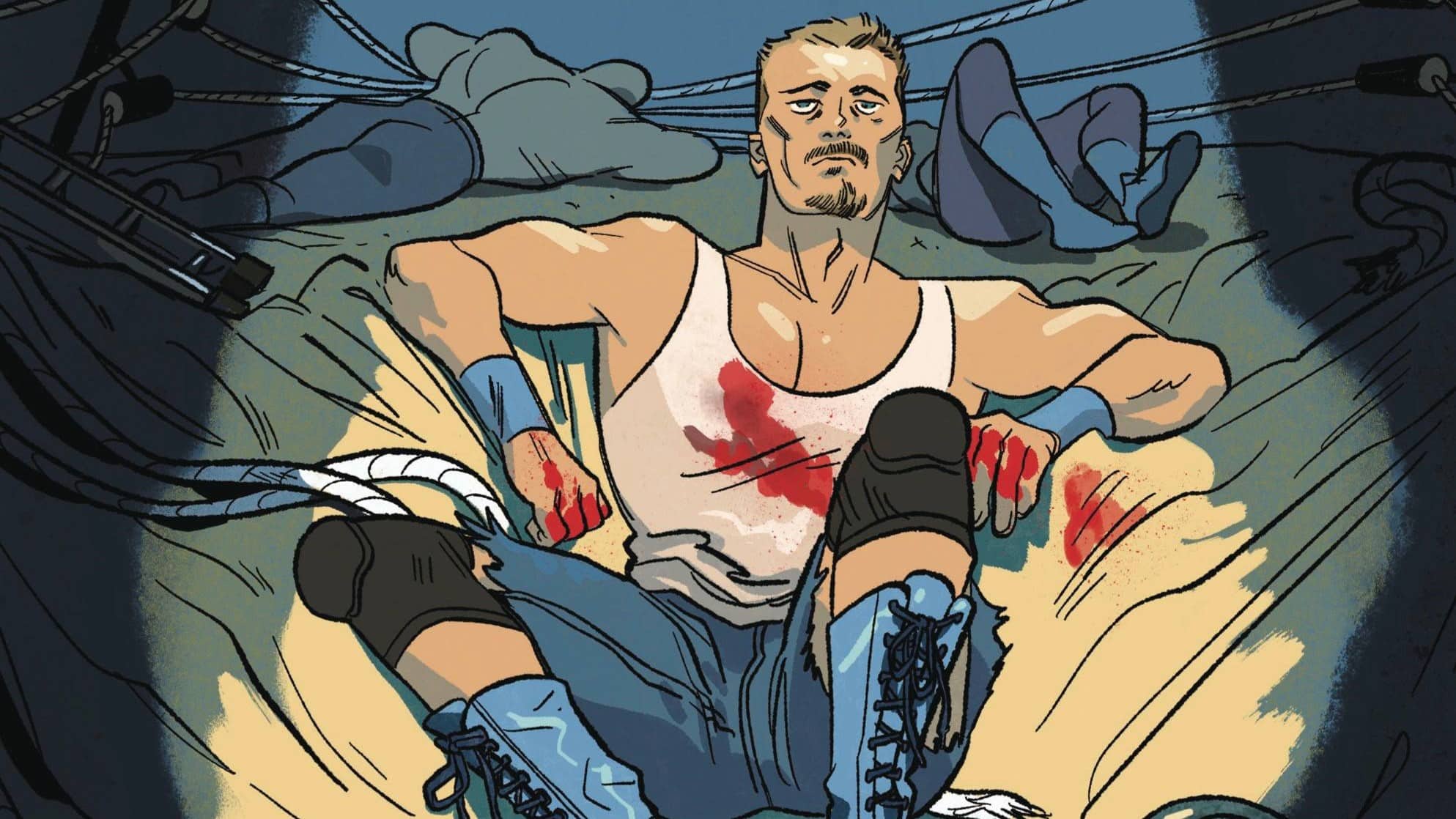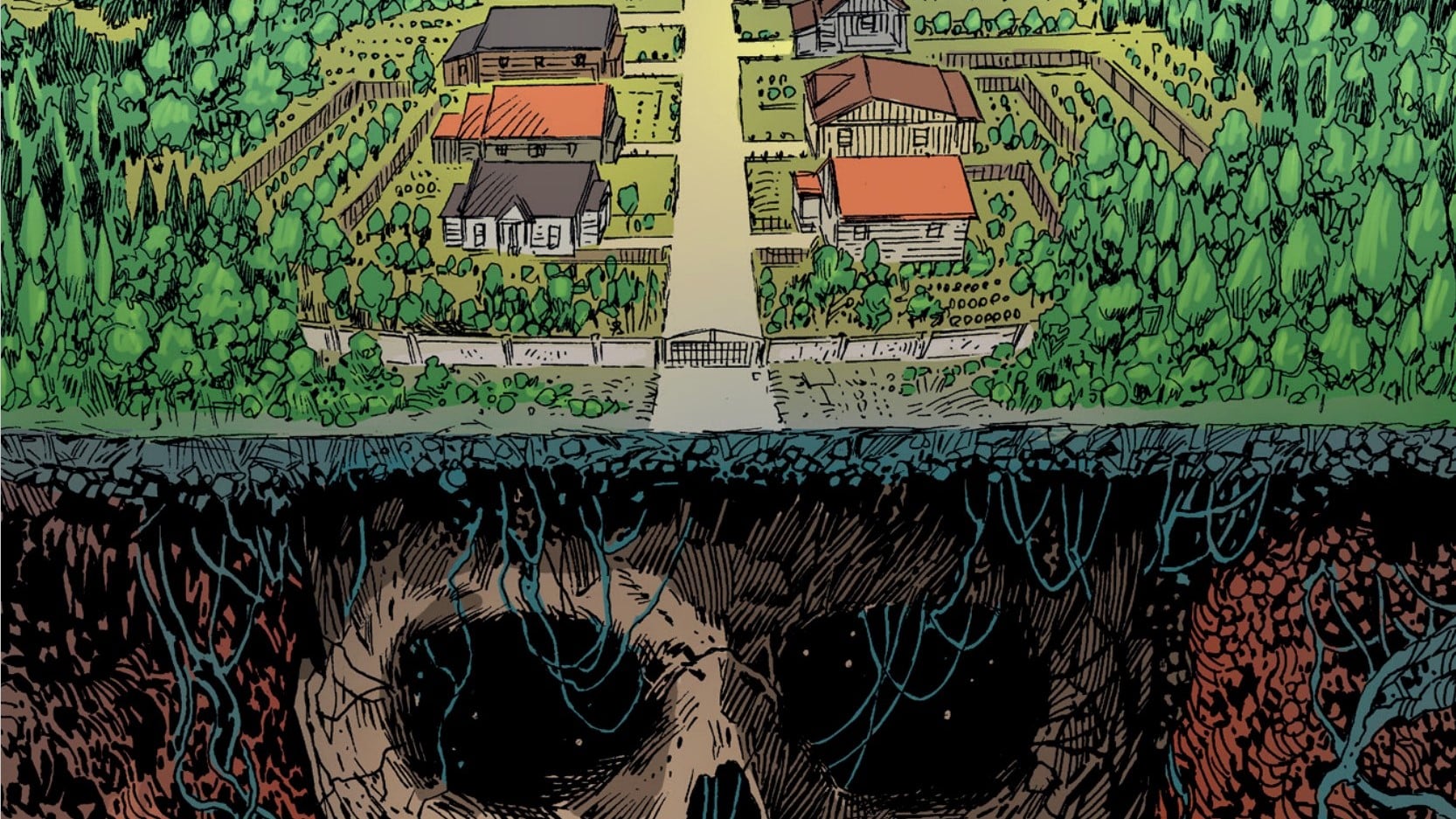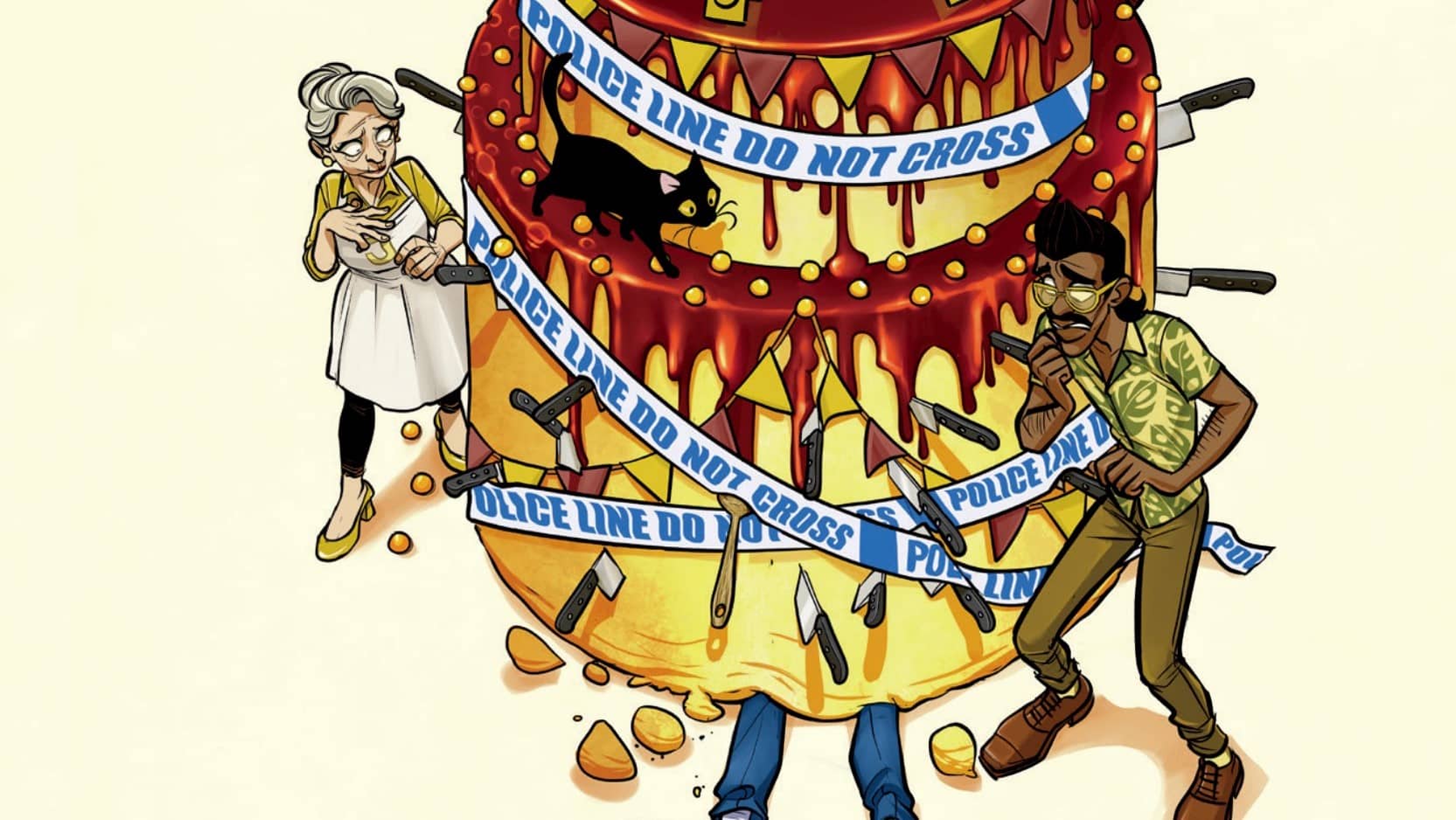Shhhhhh. Wanna know a secret? We got an early look at BOOM Studios’ Seven Secrets #1 and #2 by writer Tom Taylor, artist Daniele di Nicuolo, colorist Walter Baiamonte and letterer Ed Dukeshire. Is it BOOM’s next big hit, in the footsteps of Once & Future or Something Is Killing the Children? Well, we better let Vishal Gullapalli and Ritesh Babu break it to you.

Vishal Gullapalli: This is a book I’ve been really interested in — Tom Taylor’s not exactly my favorite writer at the Big Two, but he’s written a few books that I do really enjoy. Even with that, though, it always felt like his writing style was better geared to interactions between pre-existing characters than original storylines. That’s why I’ve been so intrigued by Seven Secrets, because Taylor can’t rely on fans’ love of the world he’s writing and his voices for the characters – he needs to create that all on his own.
Ritesh Babu: Taylor’s always struck me as something akin to the Peyton Reed of Big Two comics, to go for a comparison relevant to the realm of recent superhero stuff. It ticks off all the basic boxes you want, has some neat moments and it’s done by a dude who plays well with company mandates. Nothing to rock your world, but something you’ll look at and go, “Neat!” He’s kind of the epitome of the MCU approach to storytelling for me. A rock-solid formula that’s rarely wavered from, with disaster-movie aesthetics heightened to the next level, as momentism comes above all.
All of which is to say, I’ve actually been quite intrigued by this project. BOOM’s had quite a few excellent, striking launches in the last li’l bit, from your Spurriers, Gillens, Tynions and soon even Ewings. And the potential of “Well, what’s Tom Taylor into, and interested in, beyond superheroes, and superhero-adjacent stuff, beyond the whole general checklist of pop culture like Star Wars and whatnot?” being answered was quite exciting.
VG: Sadly, I think it’d be better if we didn’t bury the lede: The book does not live up to our (in my eyes reasonable) expectations, for a LOT of reasons. This wasn’t just first-issue jitters, either — we got to look at the first two issues of this series and still came to the same conclusion.
The Way It’s Laid Out

VG: Right off the bat, it’s hard to get invested — the first issue is essentially an action sequence across 22 pages with some flashbacks thrown in, covered in narration that says a lot without saying much at all. Not much happens, and a character we barely know dies at the end, and it feels like it’s something that’s supposed to keep someone reading. In my case, it really didn’t work.
RB: My immediate impression reading this book, having spent a youth completely obsessed with both, was “I’m reading a very boilerplate and boring YA book/shounen manga.” I can see what this aspires to be — a globe-trotting adventure saga with a group of young heroes emerging from this long line, this established mythology, and it’s rooted in all these mysteries (“What are the Seven Secrets?!”) and all that. But here’s the thing — having read a lot of those, and having loved them, I found this just … boring. Not bad, just extremely dull.
To me, it reads like a poor man’s Rick Riordan, without any of the flair, or the charm.
VG: It’s funny you mention Riordan, because The Lightning Thief, the first of his most popular series, starts off really memorable with Percy’s math teacher turning into a monster and trying to kill him. Obviously the series was rooted a bit more in the recognizable world, but the idea of this memorable opening is important — I honestly don’t remember very much at all about the opening two chapters being the aforementioned single action sequence and then a long flashback origin story. Without even digging into the contents or intentions of the book itself, it’s hard to see someone getting invested with these two issues, which is a real problem in a serialized format.
RB: Yeah, the whole first issue is just a gigantic prologue. It’s like the prologue chapter of every YA book. And it just ends on it, being just this extended action scene. It’s just exposition/foundation for what comes next, but as you read this first issue, there’s nothing to latch onto. With a YA book or OGN, you get to read it all at once, so you can just move to Chapter 1, but with this, there’s a whole month in between, which is such a baffling choice. This feels like a book that could’ve REALLY benefited from the Image-esque oversized first issue, straight out of the Monstress and Adventureman Club.
VG: Or like how Fire Power recently released its entire first volume as an OGN before the ongoing even began — that, to me, was a really smart way to do it. But the structure of the book so far isn’t what makes this book as disappointing as it is; there’s a lot of different factors. The actual contents of the issues don’t do a very good job being engaging, even the characters — who are normally Taylor’s bread and butter in his Big Two work.
The Characters

RB: The lead character, Caspar, feels like the prototypical YA character, but is less an individual here, and more a vehicle for extreme exposition and attempts at worldbuilding, as long-term plotting is alluded to. It’s so overloaded with that stuff that the character himself, while he has a decent moment with his dad, just feels utterly generic. And also, you can definitely tell this book isn’t by a PoC writer, because while Caspar is biracial, the work never really dives into that. Its job is to set up and get you invested in character, provide a distinct perspective from them, but what it instead offers is a generic, broad-strokes figure serving a plot that is clearly nowhere near as interesting or intriguing as the work assumes.
VG: Yeah, Caspar feels like a mediocre version of a lot more interesting characters — Damian Wayne, Killua Zoldyck, Obadiah Archer, Julia Butler. He’s a kid raised by this group of elite assassins/guardians/etc. who is a prodigy and almost heir apparent to his group. But there isn’t that bite that the characters mentioned have — he’s just a pretty standard well-meaning kid who has pretty standard YA protagonist ambitions, and there’s pretty much no memorable attitude or personality. Taylor adds just a little bit more flavor to Caspar’s parents, but considering one of them dies before we get to actually meet Caspar, there isn’t much to make any of them memorable. The best character bit is fatherly angst, but I can’t tell if it’s actually good or if my own predisposition to loving fatherly angst makes me enjoy it.
RB: Yeah. Instead of a striking personality, you’re left with a bland figure. And in all fairness, that blank-state nature can very well be the point! But that isn’t really the case here, as the work never truly focuses on anything that isn’t relevant to this macro-plot and flashback exposition stuff. It feels chained to its intent, unable to deliver the contents in the best possible way.
What Caspar, and the book itself, lack is specificity. Vagueness is boring, specificity is interesting. So for instance, the idea of Caspar being effectively raised by a cult is mentioned in one line, and that’s interesting! I know folks who come from backgrounds like that! There’s a lot to unpack there! That can be distinctive, and specific. But it just … never really delves into that, explores that or touches on that beyond that one line? It’s just generic, broad-strokes stuff you’ve seen a billion times in pop culture, the “cool organization and its various branches trained me in cool stuff!” but little else.
VG: I think my biggest issue is that while a lot of books have this shaky start, you can at least see some potential for developments. Here that isn’t the case. There’s the vagueness you mentioned, but it’s not a vagueness that feels like the characters can go in any direction — it feels like a vagueness intended for the characters to be as agreeable and generically likeable to as many people as possible. There aren’t any distinct impressions, just the character equivalent of a smiley face.
The Trinity That Works:
Di Nicuolo/Baiamonte/Dukeshire

RB: On the plus side, I quite love Daniele Di Nicuolo and Walter Baiamonte’s artwork. There’s a great energy to the work, and it’s very much that sort of preferred BOOM in-house school of comicking styles, akin to Dan Mora, but it’s much looser, less angular and softer. It’s got that anime/manga touch of influence, and it looks like something you could reasonably see be a Netflix animated series or something. And part of that look is Baiamonte’s approach. The blacks/reds in particular stand out as a great strength of his work.
There’s a bit of the Legend Of Korra Studio Mir vibe, which I like, and the book moves with the artwork. The work is loose, it looks sleek and feels fitting for the sort of all-ages YA and familial adventure vibe that the book is going for.
VG: Yeah, I have to agree about Di Nicuolo — the pencils are fantastic and make the whole book easy on the eyes. I’m not so sure about Baiamonte’s colors, though. There’s a lot of scenes that work really well, but there’s some where the colors feel too monochromatic — it feels like an intentional effect of lighting, but it just makes things harder to parse, at least for me. That being said, I do enjoy the art here as a whole — there’s a good sense of pacing per panel, and the characters feel dynamic and expressive.
RB: I’m not as hot on Dukeshire, a letterer I normally ADORE (See: Klaus, Once & Future), here, but I think that’s largely because of the captions and how much the work relies on them. Those aside, I think what he does, the spirit of it, with the SFX and the balloon placement, is mostly OK. I think this one’s largely a case of a mismatch, as Dukeshire/Gillen, Dukeshire/Morrison work quite well for me, whereas Dukeshire/Taylor just read … awkward.
VG: I’m not as much of a lettering buff as Ritesh, so I can’t speak as eloquently to that, but I feel like most of my problems with it do come from the script — there’s a lot of narration boxes per page, because there’s a lot of narration per page. I’m not sure what Dukeshire could have done to make it a more engaging visual experience, but as it stands, the combination of him and Taylor does neither of them any favors.
The Secrets

VG: With the characters not up to Taylor’s standard, the plot and themes of the book really need to be a cut above. Sadly, plots and themes have never been Taylor’s strong suit, and this isn’t an exception. Taylor’s entire premise for this book revolves around secrets and the power they hold, but he’s not saying anything about them beyond “Secrets exist, and they have power.” That’s literally the entire opening monologue for the first five pages of the book. It doesn’t say anything beyond that.
RB: This goes back to the Lack of Specificity problem. The whole setup here is so, so vague it’s almost meaningless. The question I keep coming back to is “Why should I care?” which is a shame, since I really, really went into this book wanting to LOVE it. This reads like Taylor trying to do “high-concept” worldbuilding and epic, longform plotting, two things I just plainly do not associate with him, and thus far, in these two issues, I really don’t think it’s working.
My impression immediately was “If you told me Geoff Johns ghost-wrote this, I’d buy it,” given the obsessive Seven Secrets motif. And then every page from there on, from that first, confirmed that. This book is built on The Johnsian Literalism approach to storytelling. It beats you over the head with the word “Secret,” and “Secrets,” so much, on virtually every page, that you’re just deeply tired.
The book clearly wants to intrigue, and be epic, it wants to be mysterious and hook you, but it feels like the only way it knows how is to keep repeating SECRETS a whole lot. It’s so in-your-face that its lead’s name even means Secret. Everything is about secrets, but Taylor’s not a very effective mystery writer who seems to be aware of just how to give out information, and what bits to give to grab interest. Right now, it’s like the most basic Fate anime premise, without anything to really grab you by the heart, in contrast to a lot of the other new BOOM debuts.
VG: It’s so blatantly obvious that Taylor wants us to ask him what the Seven Secrets are, he’s asking the question himself. The problem is, I don’t really care. I don’t think it’s possible for me to care. The Seven Secrets are basically macguffins that could be replaced with “Seven Artifacts” or “Seven Scrolls” or anything else — the main character(s) will end up in a position to obtain them all, and have to make a choice about whether to use them to change the world — and if Taylor’s past works are to be believed, they’re going to choose to not use them, as no one should have that kind of power. It’s a story that’s been told so many times in so many more interesting ways, and it just feels like a disappointment — even if I’m wrong about where it eventually goes, these first two issues do not do anything to promise originality.

